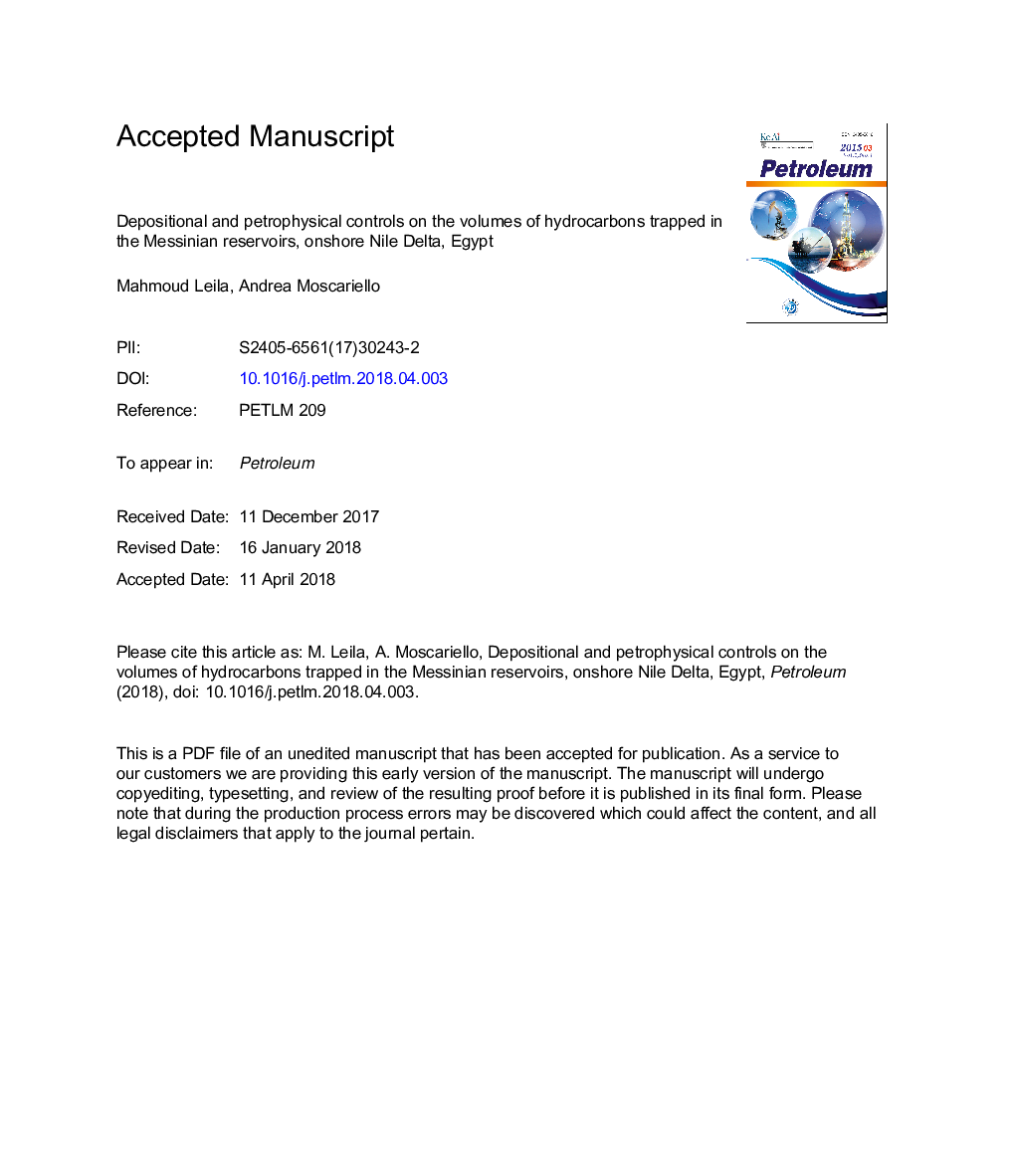| کد مقاله | کد نشریه | سال انتشار | مقاله انگلیسی | نسخه تمام متن |
|---|---|---|---|---|
| 8947773 | 1645609 | 2018 | 53 صفحه PDF | دانلود رایگان |
عنوان انگلیسی مقاله ISI
Depositional and petrophysical controls on the volumes of hydrocarbons trapped in the Messinian reservoirs, onshore Nile Delta, Egypt
ترجمه فارسی عنوان
کنترل های رسوب گذاری و پتروفیزیک بر حجم هیدروکربن هایی که در مخازن مسیین، در دریای دلتای نیل، مصر به دام افتاده اند
دانلود مقاله + سفارش ترجمه
دانلود مقاله ISI انگلیسی
رایگان برای ایرانیان
موضوعات مرتبط
مهندسی و علوم پایه
مهندسی انرژی
انرژی (عمومی)
چکیده انگلیسی
The Messinian sequence in the Nile Delta hosts the most prolific hydrocarbon reservoirs, and is therefore of great importance from the aspect of nonrenewable fuel sources exploration and development strategies. This study presents an investigation for the differential impacts of the depositional and petrophysical attributes on the hydrocarbon volumes trapped in the Messinian reservoirs. Analyses of the pressure data and pressure gradients revealed hydraulically-connected and homogeneous Messinian reservoir rocks. The amounts of Stock Tank Oil and Gas Initially In Places (STOIPP & GIIP) are typically controlled by the depositional primary attributes (matrix content and grain size) which induce several reservoir heterogeneities. The Lower Messinian Qawasim reservoir is subdivided into two main zones: the distal deltaic (zone 1) prograded into proximal deltaic facies (zone 2). The petrophysical reservoir quality in terms of porosity, permeability and water saturation increases upward from zone 1 to zone 2. These are largely controlled by the depositional attributes, and therefore zone 2 with a minimum matrix content, coarse-grained sandstones and mega pore spaces (>150â¯Î¼m) hosts almost 90% of the STOIIP and 100% of the GIIP. Notably, approximately 78% and 65% of the total STOIIP and GIIP, respectively are confined within the coarse-grained delta-plain distributary channels of zone 2. Similarly, the fluvial sediments (zone 1) of the Upper Messinian Abu Madi Formation host 78% of the GIIP in West Al-Khilala Field and the other 22% is trapped in the overlying zone 2 and is mostly distributed within the sand-prone tidal channel and tidal sand bars facies. The channel width/thickness (W/T) ratio largely controls the STOIIP and GIIP values. STOIIP and GIIP display a progressive linear increase with increasing the channel width. This is likely due to increasing the percentage of the good reservoir quality facies within the geologic model as well as increasing the reservoir connectivity with increasing the channel width.
ناشر
Database: Elsevier - ScienceDirect (ساینس دایرکت)
Journal: Petroleum - Volume 4, Issue 3, September 2018, Pages 250-267
Journal: Petroleum - Volume 4, Issue 3, September 2018, Pages 250-267
نویسندگان
Mahmoud Leila, Andrea Moscariello,
